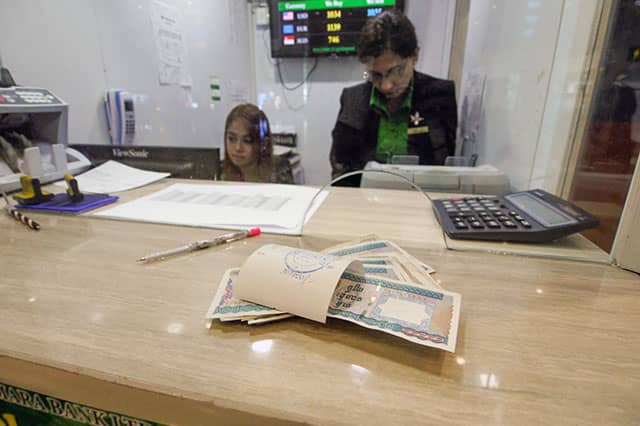Environmental Impact Assessments Should Ensure That Investors Address Adverse Impacts; They Are Not A Good Tool For Promoting Community Development

On 24 May, Vicky Bowman, MCRB Director, gave a presentation to a webinar hosted for around 60 participants by the Myanmar Environmental Assessment Association (MEAA) in which she explained the multiple meanings and understanding of ‘CSR’ (corporate social responsibility) which had evolved over time and in different parts of the world.
These different understandings were sometimes described as CSR1.0 (philanthropy), CSR2.0 (the responsibility of businesses for their impacts on society) and CSR3.0 (creating shared value). These multiple understandings meant that the word ‘CSR’ was not suited for legislation.
When it came to encouraging responsible business conduct (RBC), MCRB’s preferred term, she underlined the need to distinguish clearly between an investor’s legal obligations under the Myanmar Environmental Conservation Law (including the EIA Process), Myanmar Investment Law, and other laws. A company also had a responsibility to respect human rights in line with the UN Guiding Principles on Business and Human Rights. Beyond these obligations, there are additional steps which investors could take to invest responsibly, increase their positive contribution to development, and strengthen their ‘social licence to operate’.
She noted that while Myanmar’s EIA Procedure was relatively well-designed on paper, and covered adverse social as well as environmental impacts, its implementation was weak for a variety of reasons. One problem was that the regulator – Environmental Conservation Department (ECD) of the Ministry of Natural Resources and Environmental Conservation – were asking EIA consultants to use the EIA process to identify actions which ECD referred to either as ‘CSR’ or community development. Their focus sometimes appeared to be more on ‘CSR’ than on the main purpose of an EIA which was to identify potential ‘adverse impacts’ and measures to avoid, reduce and mitigate them.
This approach appeared to be coming from a widely held but mistaken belief that that ‘CSR’, defined in terms of spending on community development, was obligatory in Myanmar. However, Vicky’s presentation highlighted that, other than in the Gemstones Law, there was no legal requirement in Myanmar for a company to provide funds for community development. U Thant Sin Lwin, the Director-General of DICA, and Secretary of the Myanmar Investment Commission (MIC), had confirmed this at MCRB’s seminar on corporate philanthropy in October. He had explained that the Myanmar Investment Law, and the Myanmar Investment Commission do not require investors (foreign or Myanmar) to spend a percentage of their profits on ‘CSR’ or philanthropy. Rather, the MIC encourages investors to consider the many different ways in which their businesses can enhance the welfare of the Myanmar people and deliver ‘responsible and inclusive investment’ with a positive local impact. Vicky noted that this could be achieved in many ways. Companies could support education and training programmes that improved the employment prospects for local people, prioritise procurement from local SMEs, or sponsor local cultural or sporting events, to name a few. Some of the activities were difficult to quantify as spending as they could be integral to the business’ operating costs, for example its human resources budget.
To be successful, such initiatives should be pursued by the investor over the course of the project, and adapted in constant discussion with the communities. They were not a matter for the EIA consultant who had a short-term professional responsibility to advise the investor on adverse impacts and how to address them.
Furthermore, where projects were long term – such as mines, hydropower – good practice was for the company to negotiate a ‘Community Development Agreement’ (CDA) with local communities. This could cover the company’s relationship with the community and how they would benefit from the investment, including through development funds. Vicky gave examples of how such CDAs had been either undertaken voluntarily by the company, or made compulsory by some governments for certain types of project. This was an option for the Myanmar legislature. However, this would best be achieved either through the Investment Law, sectoral laws, or individual investment agreements, not the EIA process.
Finally, Vicky touched on the challenges posed to public participation in EIA processes during COVID-19 and highlighted how other countries were approaching this. The UK had identified online means for consultation, but this might not be appropriate in Myanmar. She noted that EIA consultants and project proponents anyway had an obligation under the EIA Procedure to publish information and assessments online, which was still not regularly happening. This was an opportunity to step up on disclosure and also engagement with civil society organisations at national and local level. MEAA said that they were awaiting guidance on how to consult during COVID-19 from ECD.
(Subsequently, Myanmar Civil Society organisations issued an urgent statement on 29 May calling on government to ‘unconditionally suspend land registration and land confiscation under the Vacant, Fallow, and Virgin (VFV) Land Management Law and the planning and implementation of business investments using Myanmar’s natural resources such as water, land and ecosystem during the COVID-19 pandemic when there are limitations on monitoring due to restrictions on people gatherings’ and to ‘Temporarily suspend mineral mining, issuing licenses for mining, exploration, dam construction projects, hydropower projects and energy related projects that are detrimental to the environment and local communities since the public cannot gather to respond during the pandemic’).
Questions and discussion focussed on the difficulties being faced by EIA consultants in the face of regular requests from Environmental Conservation Department to include ‘CSR’ or ‘community development’ in the EIA and Environmental Management Plan. Vicky commented that one of the best ways that ECD could promote community development in the context of the EIA process was to ensure - including through a requirement in the Environmental Compliance Certificate as was increasingly the case - that investors had effective operational grievance mechanisms which allowed communities to raise their concerns for example about lack of employment opportunities. Further details about effective OGMs are available in Myanmar’s draft Public Participation Guidelines. She suggested ECD should monitor OGM effectiveness through the company’s six monthly reporting and by determining during field visits whether such mechanisms were in place and known by the community, what issues were being raised, and how the company was addressing them.
A point was also raised about whether an investor had a legal obligation to contribute to the, as-yet-not-yet established Environmental Management Fund (EMF) envisaged by the Environmental Conservation Law (2012) and Environmental Conservation Rules (2014). A similar lack of clarity exists concerning how Myanmar intends to implement ‘payment for ecosystem services’ (PES).
MCRB’s 2018 Briefing Paper on Biodiversity, Business and Human Rights notes that ‘The only reference in the Procedure to ecosystems services is in Article 91(p) which allows for the Ministry to prescribe ‘contributions to the Environmental Management Fund in accordance with Article 30 of the Rules: (i) pollution charges (emissions, waste), and (ii) charges on the use of natural resources and benefits from ecosystem services’. PES is also mentioned in the 2018 Protected Areas Law where it is noted (para 13d) that the Forestry Department Director General will “determine a system for Payment for Ecosystem Services derived from the ecosystems within a Protected Area”.
Vicky noted that arrangements for these obligatory contributions were yet to be established by MONREC. However they were additional, and were not a substitute for investors meeting the costs of avoiding, reducing or mitigating adverse environmental impacts in their EIA/EMP.
ဆက္စပ္ေသာ အေၾကာင္းအရာ
- MCRB comments on the draft registration procedure for ‘3rd party’ EIA consultants
- ေက်ာက္ျဖဴၿမိဳ႕ရွိ ေဒသခံမ်ားအတြက္ ပတ္၀န္းက်င္ထိခိုက္မႈဆန္းစစ္ျခင္း (EIA) ႏွင့္ အမ်ားျပည္သူပူးေပါင္းပါ ၀င္ျခင္း ဆိုင္ရာ အလုပ္ရံုေဆြးေႏြးပြဲက်င္းပ
- ပတ္ဝန္းက်င္ထိခိုက္မႈ ဆန္းစစ္ျခင္းကို အမ်ား ျပည္သူ သိရွိနားလည္မႈ အားေကာင္းလာေစရန္ ေဆာင္ရြက္ျခင္း
- Civil Society Organisations Stress the Need for More Information in the EIA Process
 English
English မြန်မာ
မြန်မာ မြန်မာ (unicode)
မြန်မာ (unicode)










